Morning in Nanaimo. My brother (who lives there) called me at some ungodly hour, and at which point I rolled over and was informed by my legs that I had ridden a bunch of miles the day before. My bro Seth works in Nanaimo as an addictions counselor at Edgewood, which means he is a) a saint and b) capable of calming down large dudes who are coming off of various drugs (he’s a big dude himself luckily, so this is all good.) Along with his girlfriend Clarice, we headed out into town to get some coffee and carbs and chat for a while. It was great to see them.
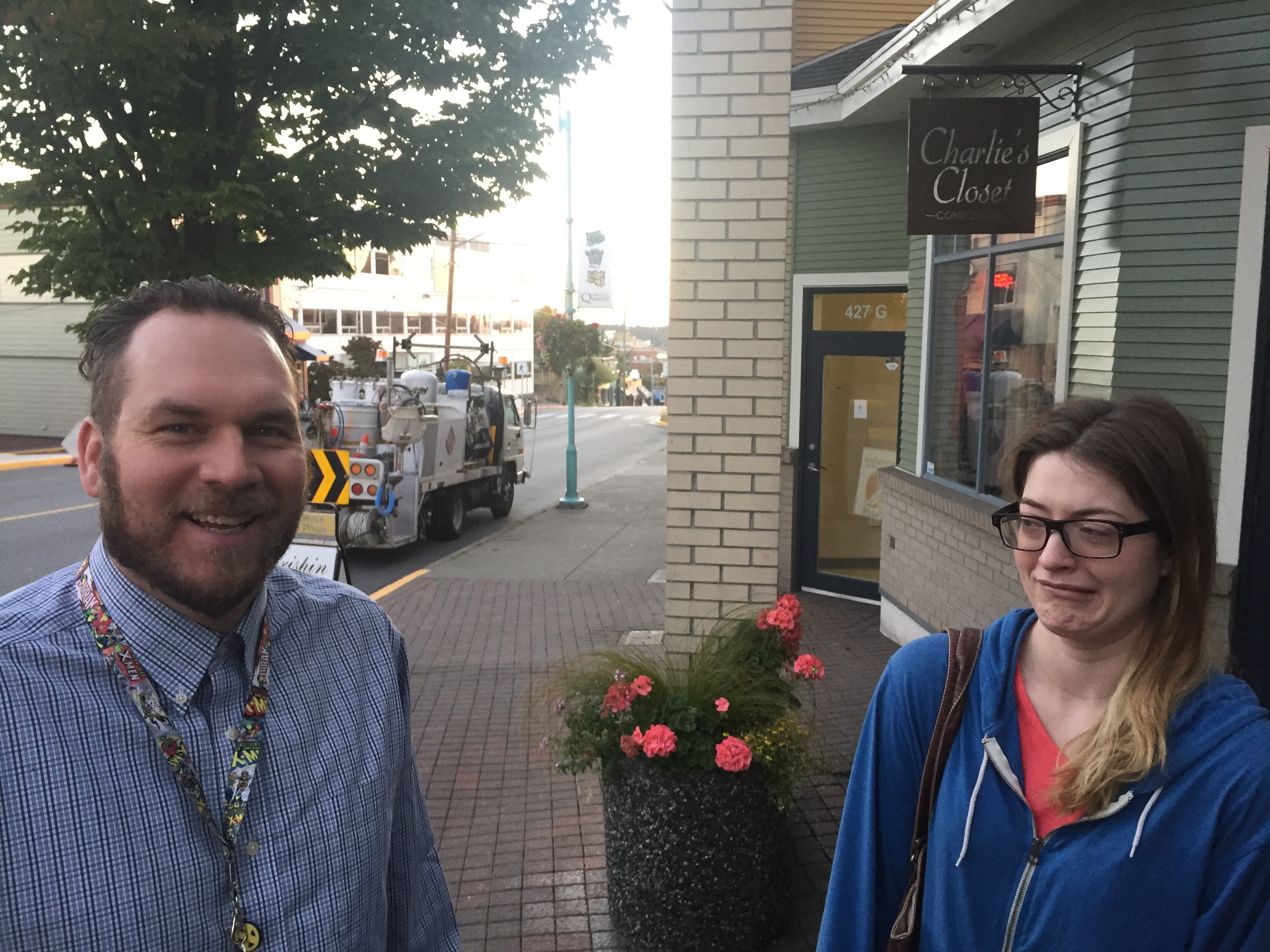
Soon thereafter, I met back up with Josh and Mark to head down to the ferry to Horseshoe Bay (West Vancouver) and the start of the day’s ride. As we neared the mainland, we cruised past the mouth of Howe Sound, a 25-mile long massive Fjord that juts deep into the coast mountains. We’d spend the first half of the riding day weaving our way up the highway along its shore. (More on that in a moment.) From the Straits of Georgia it looked peaceful, an ideal place to ride.
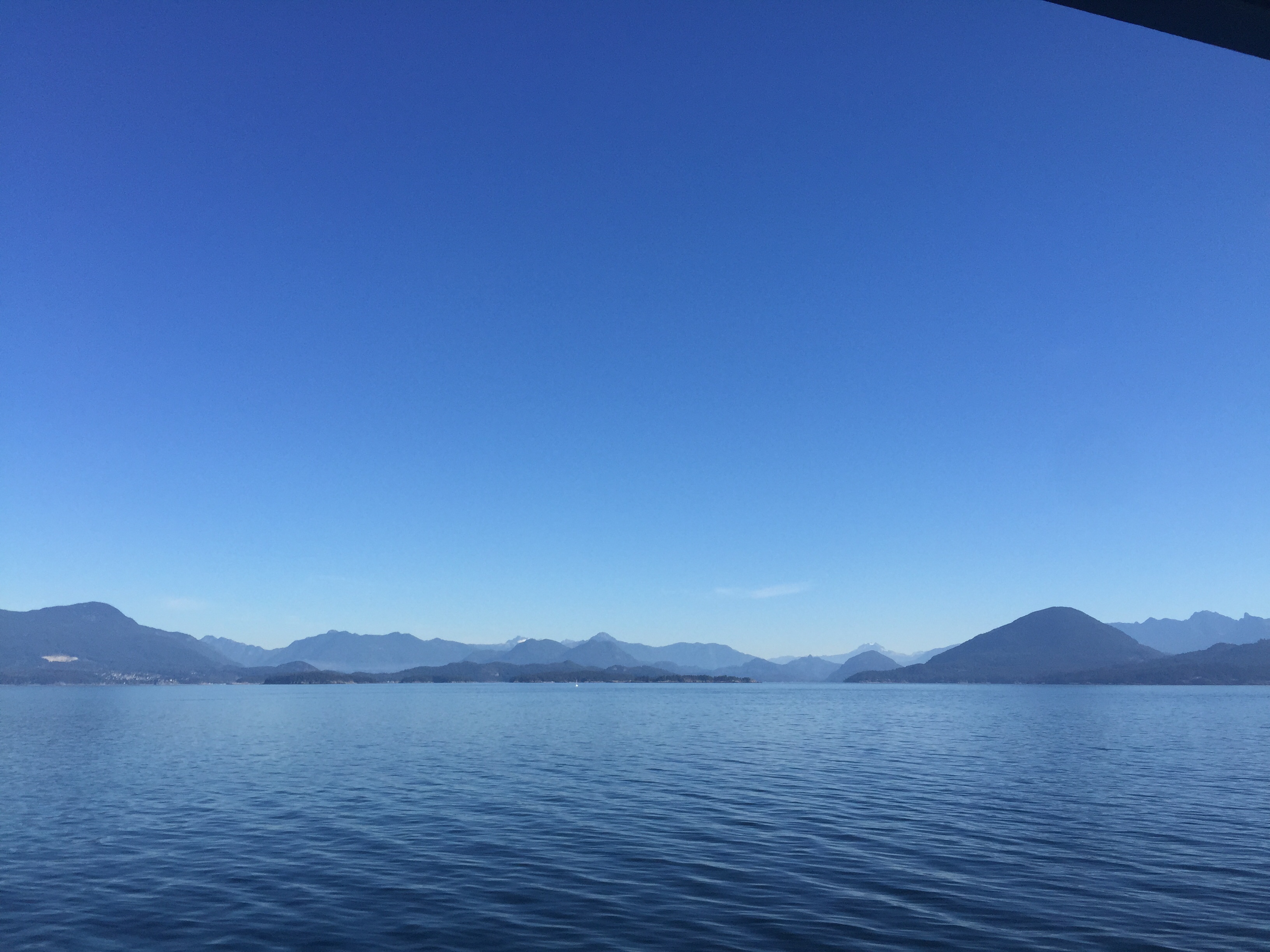
The climb out of the hollow of Horseshoe Bay was a foretaste of the pain to come — it was quite steep, and involved several switchbacks even before we arrived at the main highway. Our left onto BC Highway 99 was our last navigation decision of the day. This highway would take us up the northeast shore of Howe Sound to Squamish, BC and thence up the large hill to Whistler, the site of the Automattic Meetup. Some facts about BC highway 99 — aka the “Sea to Sky”:
- it’s the northernmost segment of the longest highway in North America. It begins in Baja California and extends up to near Lillooet BC. It was extended to Whistler, BC only in 1964 — prior to that the road past Horseshoe Bay was rough.
- it was drastically improved prior to the 2010 Olympics, since it was the main road connecting the main venues in greater Vancouver and Whistler.
- The improvements included road widening and new safety barriers (when I was in high school it was a continuous two lane road on a cliff with few safety barriers — it’s significantly better now.)
- Road improvements were opposed by many indigenous groups and others, including many of the Squamish. Famously, a Squamish elder named Harriet Nahanee was said to have lost her life as a result of her incarceration after one of the road blockades prior to construction.
- The road used to be rated near the top of many lists of the worlds most dangerous roads. This is probably not so much the case anymore after extensive improvements, but it gives you some idea about the safety of the road — high volumes of fast traffic, areas of minimal shoulder and occasionally (apres-ski) intoxicated drivers have resulted in a sad history of fatalities and injuries.
As we set out on this beautiful road with its unbelievable views of Howe Sound and the Coast mountains, it was the road itself and not the scenery that was heavy on my mind. The next five or six hours would prove to be an exercise in concentration: not only was the highway continuously dangerous, but fatigue would become more and more of an issue as the day progressed. There is some uncertainty about the total climb for the day, but it is large. Google states it at between 5-6,000 total feet of climb, but we tracked some 8-9,000 feet. The number is probably somewhere in between those two ranges. As fatigue sets in, judgement and concentration wains. I know from some experience that bad mistakes are more likely late in the day when we are more physically and mentally tired. This day of riding was an example of one that required continuous concentration, and also honesty with ourselves about what we were ready to take on, and when. Safe road touring is all about never getting into a situation that you can’t get out of — whether that be not embarking on a day or part of a day of riding where the weather or wind conditions are uncertain and possibly dangerous, or deciding to end early if safety conditions demand it. I was really happy to be riding with two guys who understood this idea and showed it all day.
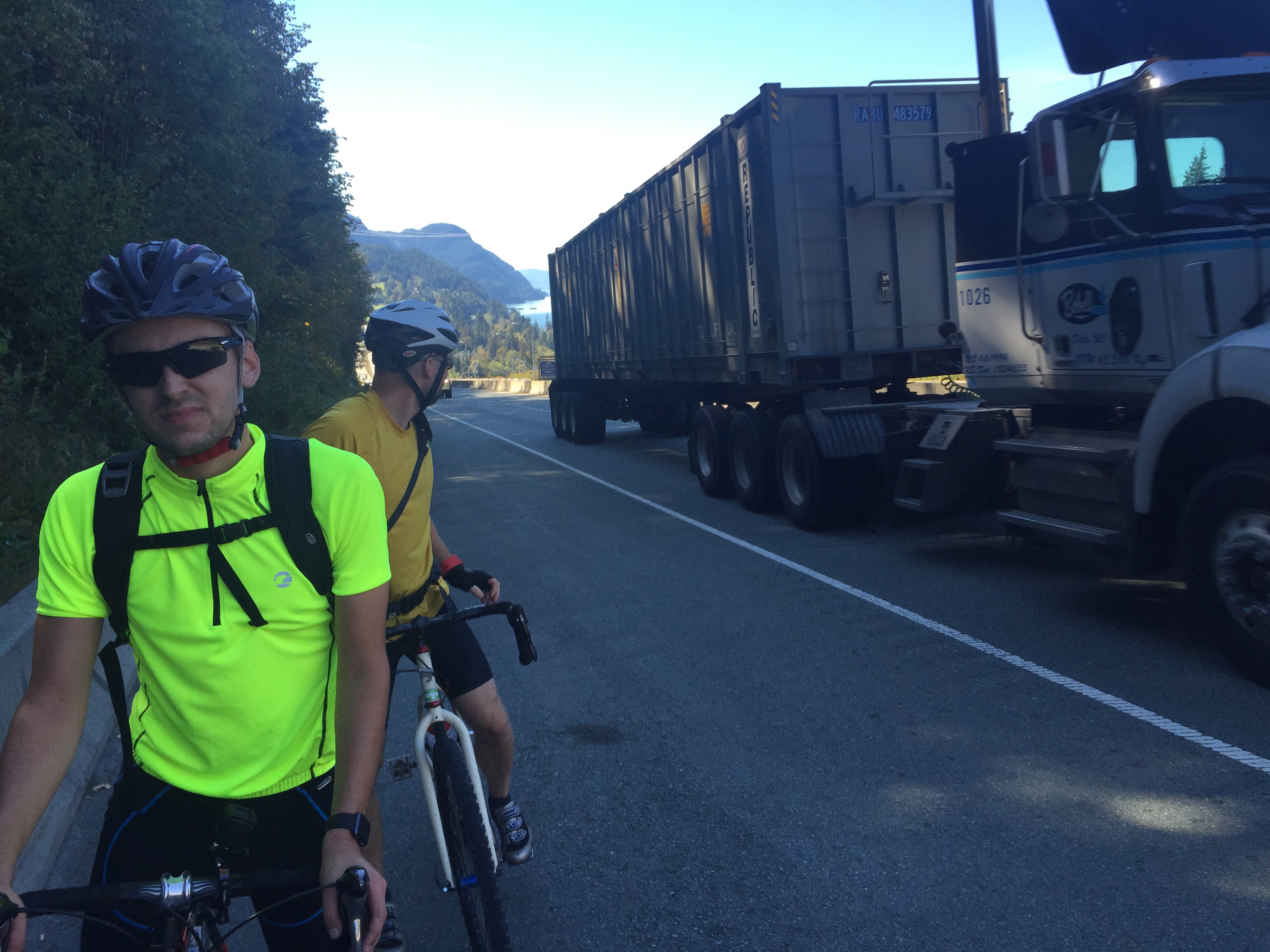
After lunch the bulk of the climbing began. Climbing is about psychology. It is going to hurt — that’s a given. But how you manage the pain and discomfort, and your own expectations about how long it will last and how it will feel are the real challenge.
Also, bears:
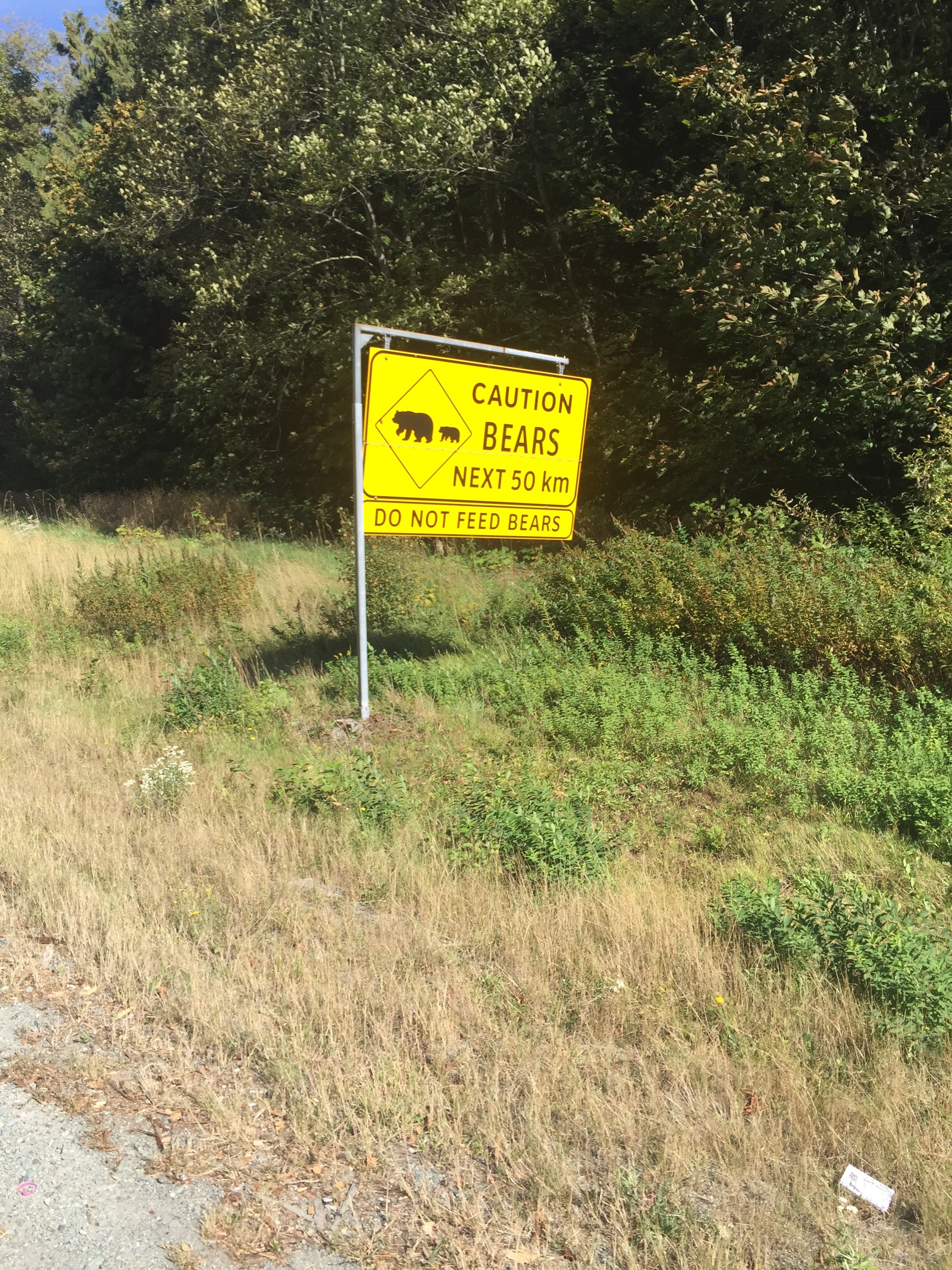
Though one imagines that these signs are around to discourage people from feeding the local osos. Here’s Mark on the hill, as we approached the Whistler area:

We arrived in Whistler tired and messy. We ate a whole bunch of food. Then we ate some more. Then we slept.
Days like this remind me why I love cycling. Sure there were cars, and there were some dangerous conditions. But enjoying an activity like autonomous road touring is all about learning how to manage risk and pain, and manage your own emotions and feelings about risk and pain. It’s also about being with other people, and being alone with other people. Even if cycling in a group, the challenge of climbing a mountain is your own physical one, even as the group travels together and looks out for eachother.
Many thanks to Josh and Mark for making this a cool two-day journey, both through the countryside and through parts of my own self that are only accessible when I put myself and a bunch of stuff on a bike and set out into the world.
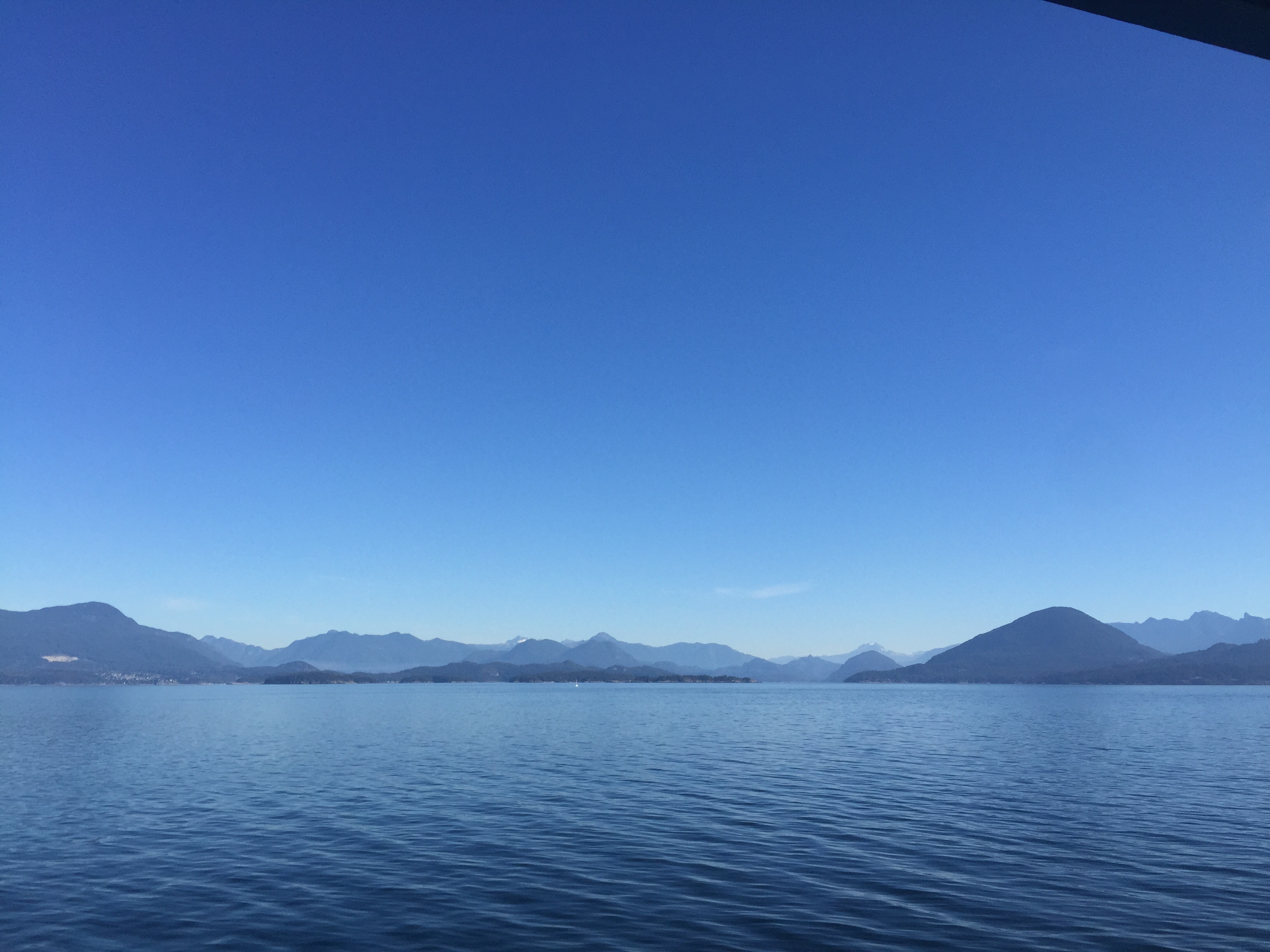
What a beautiful trip!
Looks like the weather cooperated for you – that’s good. I’m so glad that you didn’t do a pre-ride post listing all the risks and dangers involved in the ride from Horseshoe Bay to Whistler. That would have given me a legitimate reason to kick into my “stewer and fretter” mode which you are so familiar with.
When will you ever be home so you two can come see our new house???
Home in a week “Stuart McLean”! Can’t wait to see it.